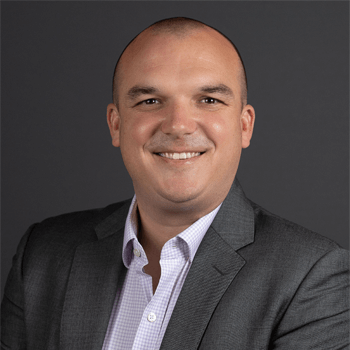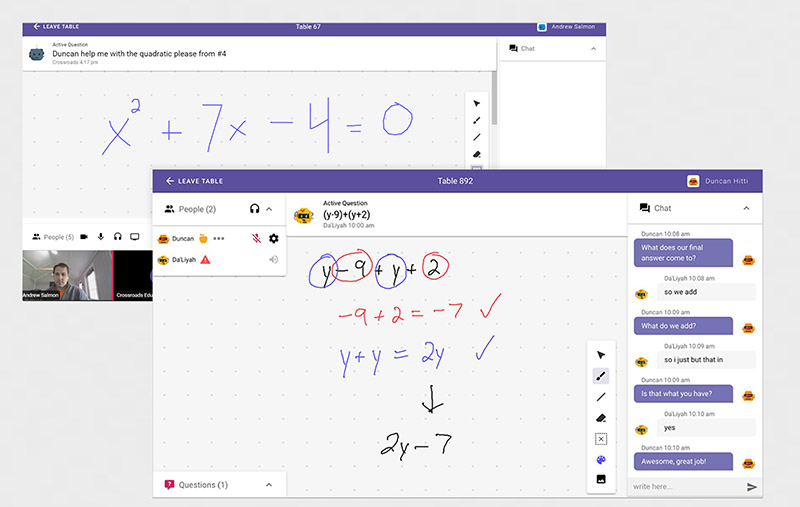- What's New
- Pricing & Purchasing
- Lead Times
- Literature & Samples
- Services & Warranties
- Careers
- Find a Rep
Opportunity from Disruption: Technology in the Classroom

Amid the ongoing teacher shortage, schools need to create learning environments that keep educators on board and accommodate students at every level of academic achievement. But how?
 Dr. Kevin Berkopes
Dr. Kevin Berkopes
To address this question, I spoke with Dr. Kevin Berkopes on the latest episode of our Furnishing Knowledge podcast. Kevin is CEO of education nonprofit Crossroads Education as well as the founder and CEO of XR Technologies, an Indiana-based company that creates processes and technology to help schools improve their mathematics education. XR Technologies serves over 2,000 students across 15 schools. Its signature offering, XR Mathematics, allows schools to bolster their math department with XR’s experts.
Kevin is passionate about using technology to break barriers in traditional education systems. As a visionary, he sees considerable opportunity in disrupting existing complexities in teaching methods to make meaningful change for the goal of highly effective, equitable education.
In the full podcast, we discuss how to reimagine the classroom to serve the needs of students and educators alike. Following are critical highlights from that discussion.
Use Technology to Maximize Teaching Methods
As a former educator, Kevin understands the challenges teachers face in the classroom, especially when it comes to those working in underfunded schools.
“We’ve seen schools where the turnover rate for teachers has reached 70%. It’s not happening at the wealthiest schools, but instead at those where resources are needed the most,” he noted.
Much of that has to do with the pressure placed on teachers to accommodate students at various levels of aptitude, while teachers are operating with limited resources. Kevin said that when it comes to math, a classroom of high school freshmen can range from students at a second-grade level to those ready for college algebra.
“Typically, that means teachers need to provide appropriate instruction for each student individually. But that’s an impossible task for one person to do,” he added. “It’s no wonder we can’t retain teachers.”
XR is already making strides in lifting the pressure off teachers and giving them more flexibility. By providing both on-site and remote instructors as well as technology-based learning platforms like virtual reality, XR allows teachers to offer the type of instruction they’re the best at in the classroom, while still supporting the needs of students who benefit from a different approach.
“In workplace industries, on-site managers are only part of the equation, and technology plays a big component,” said Kevin. “Why should K-12 education be any different?”
Explore VR and Other New Ways to Learn
Flexibility in the classroom isn’t just important for teachers. It’s a crucial tool for helping students learn in meaningful ways. Kevin noted that the traditional, lecture-based model of instruction is outmoded.
“We need to build classrooms that take the emphasis off pure lecturing,” Kevin added. “We need to incorporate different processes to foster engaged learning, and lectures are just a small part of that.”
When it comes to technical concepts, students often struggle to retain information from lectures because they aren’t actively engaging with the material or “doing” the exercises at hand.
Tech-driven tools that promote active engagement, like virtual collaboration spaces where students can work on problems with their peers and receive support from educators, can help students at all levels receive individualized instruction.
Identify and Apply Structural Change
The final pillar of Kevin’s learning agenda concerns the education system itself and the need to rethink its original purpose.
“The education system was built to do exactly what it’s doing currently,” said Kevin. “It was designed 150 years ago to resemble the manufacturing process by churning out good citizens.”
But Kevin explained that this model can’t work with kids today. In a factory, products that don’t meet expectations are treated as defective and sent back to the assembly line. The existing model treats students who come from disadvantaged backgrounds in the same way – and the system continues to fail them.
For instance, students who learn differently from their peers or who don’t meet certain academic expectations might end up being held back a grade level or placed into remedial classes, rather than receiving the individualized attention or different learning model that might help them succeed. In some cases, that can discourage kids from going to school, pursuing higher education or pursuing a personal passion altogether.
If they are placed into remedial classes, they may not receive the individualized attention they need, causing them to fall even further behind. As they slip through the cracks, the current system continues to fail them.
“High-resourced kids benefit, while others stay low-resourced,” Kevin concluded. “That’s what we've seen in 50 years of data, and that’s why we need to change it.”
Reimagine Individualized Education
This discussion with Kevin provides several questions on which we should reflect. How can we support teachers and students alike by individualizing education? How can technology and new models of instruction help achieve that goal? And how can that shift improve opportunities in our education system as a whole?
To learn more about Kevin’s work, follow @berkopes on Twitter and visit XR Technology’s website.
Be sure to listen to our full conversation and subscribe to the Furnishing Knowledge podcast for additional education insights.
Subscribe
Stay up to date with the latest trends and more.




